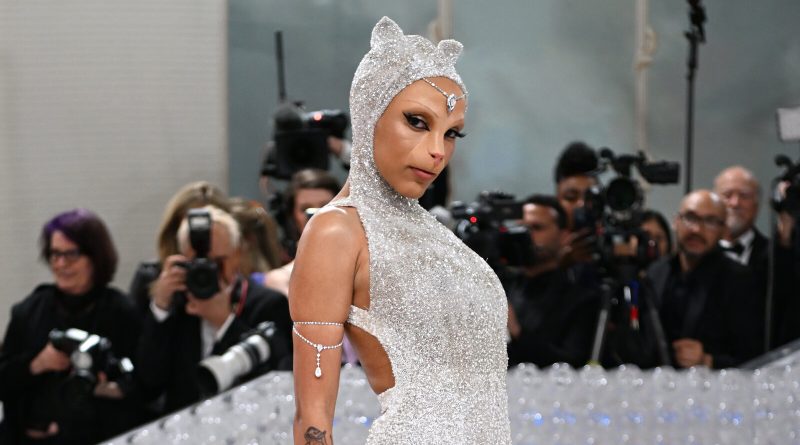Rise of Prosthetics in Fashion
Tiya Antony
Fashion News Editor
Dutch designer, Duran Lantink, at the Fall-Winter show 2025 at Paris Fashion week turned heads with the incorporation of prosthetics into his fashion designs. Model Mica Arganaraz was wearing a prosthetic torso of a chiseled six pack.

This has been a common trend among fashion designers and fashion shows recently. Designers are embracing the use of prosthetics to challenge typical beauty norms and explore the notion of transformation and creating fantasy narratives. Makeup artists have been using prosthetic props to transform models into creatures with ears, and other details. Brands like Collina Strada, Balenciaga, and Martine Rose have used makeup techniques and prosthetics to have their models appear as aliens, cyborgs, and various animals.
Designers could also be using these creative changes to create social media buzz and attention towards their brands. At the 2023 Met Gala, Doja Cat wore facial prosthetics to match the facial features of a cat. At the 2020 Balenciaga show, makeup artist Inge Grognard created accentuated cheekbones for models, allowing for out of this world beauty proportions.

Latex and silicon are the most commonly used material for prosthetics. However recent technological advancements of 3D scanning and printing allow for innovative creations.
Prosthetics started to be used in ancient Egypt for medical reasons. Advanced medical prosthetics were made as time and technology developed to meet the needs of amputees to be able to function in the world. Suddenly, prosthetics got used in the field of entertainment and art. In 1895, prosthetics were used to create props for cinemas such as for Halloween masks. Today, prosthetics are commonly used in drag to embrace femininity.

For prosthetic users, the development of technology has allowed for the combination of function and fashion. With 3D technology, customization is possible with different colors, patterns, and materials. Functional prosthetics can also be enhanced with interactive elements and LED lights to mix medical devices and fashion accessories. This allows for inclusivity, diversity, and challenging beauty standards. Prosthetic users say that customization allows them to feel confident and empowered as they grow true to themselves and are able to express themselves aesthetically as everyone else does. Integrating amputees into society is important especially for soldiers or survivors of war. Late last year the Ukrainian Fashion week had Ukrainian war veterans put prosthetics on stage. The designers wanted to display that amputees deserve to have fashionable choices and deserve to be respected within society.
The growth of prosthetics in fashion allows designers to play with narratives that allow artistic creativity to take center stage. Prosthetics could allow fashion to entangle fantasy to create larger narratives in designers’ collections. Having more prosthetics appear in the fashion world, also allows for amputees to have more fashionable options for their own functional purposes and be able to express themselves aesthetically.
Contact Tiya at antonyti@shu.edu

